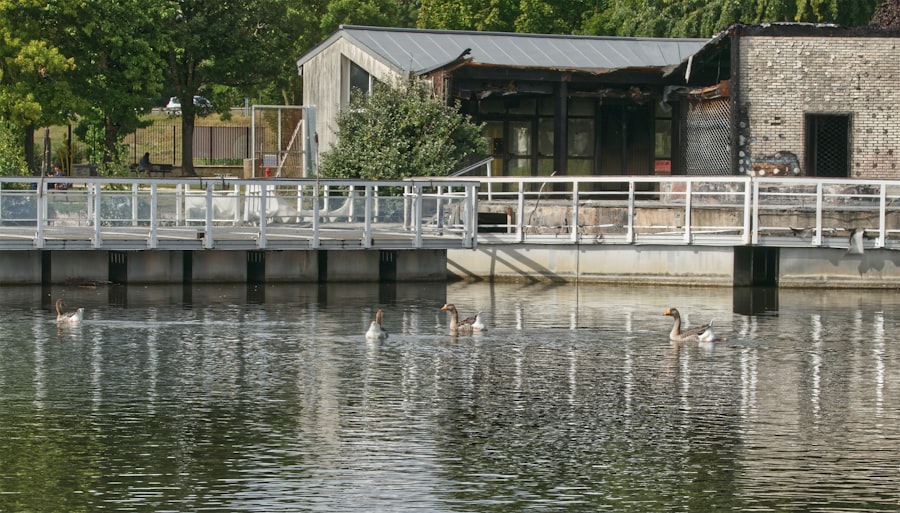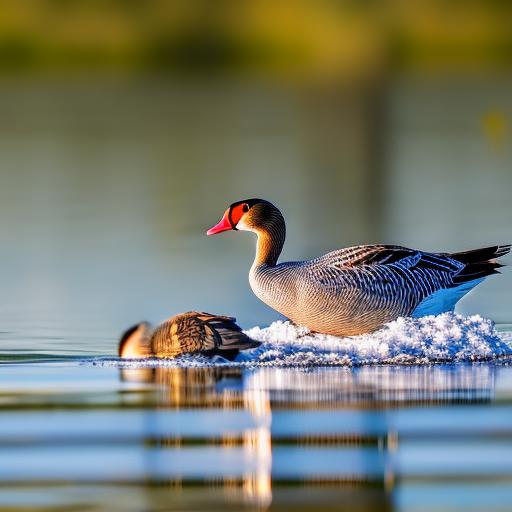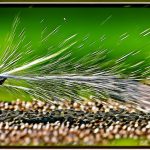Geese are known for their strong migratory instincts and their ability to adapt to various environments. They are social birds that often travel in flocks and are highly protective of their nesting sites. Geese are also known for their aggressive behavior, especially during mating season and when they feel threatened. Understanding the behavior of geese is crucial in developing effective strategies for managing their presence in urban and suburban areas.
Geese are herbivores and are attracted to areas with abundant food sources, such as grassy lawns, golf courses, and parks. They are also drawn to bodies of water, where they can find food and a safe place to rest. Geese are also highly territorial and will aggressively defend their nesting sites from perceived threats. By understanding these behaviors, property owners can develop strategies to deter geese from settling in unwanted areas.
Key Takeaways
- Geese are social birds that exhibit strong homing instincts and are attracted to open spaces near water bodies.
- Physical barriers such as fences, netting, and hedges can effectively prevent geese from accessing certain areas.
- Deterrents and repellents such as visual scare devices, sound emitters, and taste aversions can discourage geese from settling in specific locations.
- Creating alternative habitats such as planting tall grasses and shrubs can provide geese with alternative nesting and feeding areas.
- Establishing a routine of hazing through loud noises, water sprays, and trained dogs can condition geese to avoid certain areas.
- Seeking professional assistance from wildlife management experts can provide effective and humane solutions for managing geese populations.
- Maintaining a clean and unattractive environment by removing food sources and regularly cleaning up droppings can discourage geese from frequenting an area.
Implementing physical barriers
One effective way to manage geese populations is by implementing physical barriers to prevent them from accessing certain areas. Fences, netting, and other barriers can be used to keep geese away from lawns, gardens, and other areas where they are not welcome. These barriers can be particularly effective when used to protect bodies of water, as geese rely on water for both food and shelter.
In addition to traditional barriers, there are also innovative solutions available for managing geese populations. For example, floating barriers can be used to prevent geese from accessing bodies of water, while still allowing other wildlife to pass through. These barriers are often made from materials that are unattractive to geese, such as plastic or metal, and can be easily installed and removed as needed.
Using deterrents and repellents
In addition to physical barriers, there are also a variety of deterrents and repellents that can be used to manage geese populations. These products are designed to make certain areas unattractive to geese, thereby discouraging them from settling in those locations. One common deterrent is the use of visual scare devices, such as decoy predators or reflective tape, which can startle geese and encourage them to move on to a different area.
Another effective deterrent is the use of sound devices, such as propane cannons or electronic bird distress calls, which can create a hostile environment for geese. These devices can be programmed to emit loud noises at regular intervals, which can disrupt the peace and quiet that geese seek in urban and suburban areas. Additionally, there are also a variety of repellents available that can be applied to lawns, gardens, and other areas to make them unappealing to geese.
Creating alternative habitats
One way to manage geese populations is by creating alternative habitats that are more attractive to them than urban and suburban areas. By providing geese with alternative places to nest and feed, property owners can encourage them to settle in locations that are less disruptive to human activities. For example, creating wetlands or other natural habitats can provide geese with the food and shelter they need while keeping them away from lawns and gardens.
In addition to natural habitats, there are also artificial alternatives that can be used to manage geese populations. For example, floating islands can be installed in bodies of water to provide geese with a safe place to rest and nest. These islands can be designed to mimic natural habitats and can be planted with vegetation that is attractive to geese. By providing alternative habitats for geese, property owners can reduce the likelihood of conflicts between geese and humans.
Establishing a routine of hazing
Hazing is a technique that involves using non-lethal methods to discourage geese from settling in certain areas. By establishing a routine of hazing, property owners can create an environment that is hostile to geese, thereby encouraging them to move on to different locations. Hazing techniques can include using trained dogs to chase away geese, using lasers or other visual deterrents, or using noise devices to disrupt their peace and quiet.
One effective hazing technique is the use of trained dogs to chase away geese from lawns, parks, and other areas. Dogs are natural predators of geese and their presence alone can be enough to discourage geese from settling in certain locations. Additionally, dogs can be trained to respond to specific commands and can be used to patrol areas at regular intervals, creating a consistent threat that encourages geese to move on.
Seeking professional assistance

Managing geese populations can be a complex and challenging task, especially in urban and suburban areas where conflicts between geese and humans are common. In many cases, property owners may benefit from seeking professional assistance in developing and implementing effective management strategies. Wildlife management professionals have the knowledge and experience necessary to develop customized solutions for managing geese populations in urban and suburban areas.
Professional wildlife management services can provide property owners with a range of services, including habitat modification, population control, and hazing programs. These services are designed to address the specific needs of each property and can be tailored to meet the unique challenges of managing geese populations. By working with professionals, property owners can ensure that they are implementing effective strategies for managing geese populations while minimizing the impact on other wildlife.
Maintaining a clean and unattractive environment
One important aspect of managing geese populations is maintaining a clean and unattractive environment that is less appealing to them. Geese are attracted to areas with abundant food sources and bodies of water, so property owners can reduce their attractiveness by keeping lawns well-maintained and free of debris. Additionally, reducing the availability of food sources, such as grass clippings or spilled birdseed, can discourage geese from settling in certain areas.
In addition to maintaining a clean environment, property owners can also take steps to make certain areas unattractive to geese. For example, planting vegetation that is unappealing to geese or installing physical barriers around bodies of water can discourage them from settling in those locations. By creating an environment that is less attractive to geese, property owners can reduce the likelihood of conflicts between geese and humans while promoting coexistence with other wildlife.
In conclusion, managing geese populations in urban and suburban areas requires a comprehensive approach that addresses their behavior, habitat preferences, and potential conflicts with humans. By understanding the behavior of geese and implementing physical barriers, deterrents and repellents, alternative habitats, hazing routines, seeking professional assistance, and maintaining a clean environment, property owners can effectively manage geese populations while promoting coexistence with other wildlife. With careful planning and implementation of these strategies, property owners can reduce the impact of geese on urban and suburban areas while preserving the natural beauty of these environments.
Looking for ways to keep geese off your dock? Check out this informative article on Poultry Wizard that offers practical tips and strategies for managing geese around your property. Whether you’re dealing with a small flock or a larger group of geese, this article provides valuable insights on how to deter them from congregating on your dock and causing potential damage.
FAQs
What are some effective methods for keeping geese off my dock?
There are several methods that can be effective in keeping geese off your dock, including installing physical barriers such as fencing or netting, using visual deterrents such as scarecrows or reflective tape, and employing sound deterrents such as noise-making devices.
Are there any natural deterrents that can be used to keep geese away from my dock?
Yes, there are natural deterrents that can be used to keep geese away from your dock. These can include planting tall grasses or shrubs near the dock to create an unappealing environment for geese, as well as using natural predators such as dogs or birds of prey to discourage geese from congregating on the dock.
Is it legal to use certain methods to keep geese off my dock?
It is important to check local regulations and laws regarding the use of certain methods to keep geese off your dock. Some areas may have restrictions on the use of certain deterrents, such as noise-making devices or physical barriers, so it is important to research and comply with any applicable laws.
What are the potential risks of having geese on my dock?
Having geese on your dock can pose several risks, including damage to the dock structure from their droppings, potential safety hazards for people using the dock, and the potential for geese to become aggressive or territorial, especially during nesting season.
How can I prevent geese from returning to my dock once they have been deterred?
To prevent geese from returning to your dock once they have been deterred, it is important to consistently use a combination of deterrent methods, regularly maintain the area around the dock to remove any food sources or nesting materials, and be proactive in addressing any new geese that may attempt to congregate on the dock.
Meet Walter, the feathered-friend fanatic of Florida! Nestled in the sunshine state, Walter struts through life with his feathered companions, clucking his way to happiness. With a coop that’s fancier than a five-star hotel, he’s the Don Juan of the chicken world. When he’s not teaching his hens to do the cha-cha, you’ll find him in a heated debate with his prized rooster, Sir Clucks-a-Lot. Walter’s poultry passion is no yolk; he’s the sunny-side-up guy you never knew you needed in your flock of friends!







